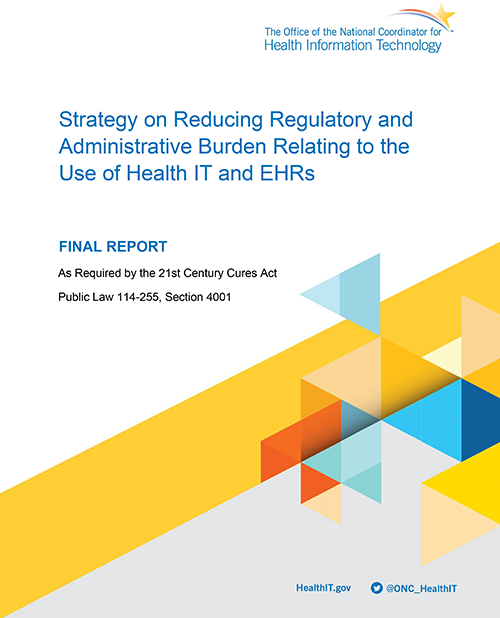Why a Playbook?
With the nationwide focus on value and quality in healthcare and incentives for clinicians to transform their practices and care delivery, investing in health information technology (health IT) is an imperative. Yet the question of how to get health IT to work efficiently and effectively in practice remains a challenge for many.
Making digital information resources available in an easy-to-navigate format is one way to address this question and ease the burden of implementing and using health IT. Which is why the Office of the National Coordinator (ONC) within the U.S. Department of Health and Human Services (HHS) created the Health IT Playbook.
In this Playbook, you’ll find strategies, recommendations, and best practices — extensively researched and gleaned from a variety of clinical settings — to help you find the support you need. Taking these steps are intended to help reduce the pain of implementing and using health IT in your practice to advance care information and delivery.
Who should use this Playbook
The Health IT Playbook is a tool for administrators, physician practice owners, clinicians and practitioners, practice staff, and anyone else who wants to leverage health IT. Administrators and practice owners will find help to plan, select, and implement electronic health records and to meet the requirements for certified health IT. Clinicians and practitioners will learn how to optimize the safety and use of electronic health records. Practice staff will be better equipped to protect the security of patient information and ensure patient safety.
Whether you're part of a large health system or a small practice, this Playbook can help you make the most of health IT and improve healthcare. You'll find resources for every step of the process, from planning to implementation to reporting.
How to use this Playbook:
With the Playbook as your guide, you can:
- Select and optimize technology for your practice (Section 1 and Section 2)
- Share health information securely (Section 3)
- Use health IT solutions to address the opioid epidemic (Section 4)
- Engage patients in their care (Section 5)
- Reconfigure payments to incentivize value (Section 6)
- Ensure privacy and security of personal health information (Section 7)
- Deliver quality care that protects patient safety (Section 8)
- Identify health IT solutions that meet the needs of unique care settings and specialists (Section 9 and Section 11)
- Align health IT with quality measures and reporting (Section 8 and Section 10)
- Find technical support for transforming your practice (Section 12)

